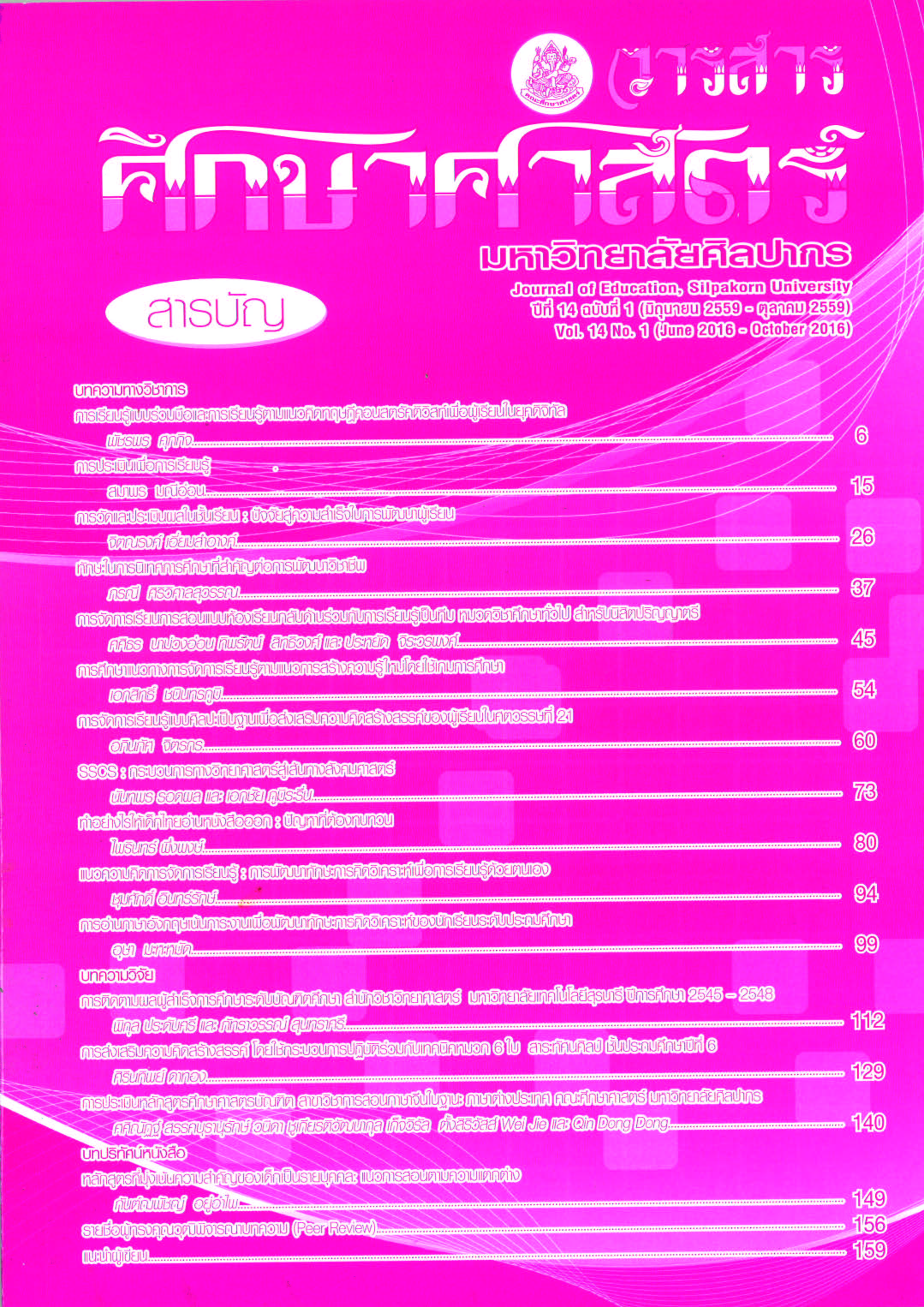การจัดการเรียนรู้แบบศิลปะเป็นฐานเพื่อส่งเสริมความคิดสร้างสรรค์ของผู้เรียนในศตวรรษที่ 21
Main Article Content
บทคัดย่อ
Arts-Based Learning to Enhance Creativity of Learners in 21st Century
During the past decade, Arts-Based learning was widely implemented in primary, secondary and higher education in the United States, and nowadays was widespread throughout the world. Arts-Based learning is a learning model integrating between art and academic learning to promote the academic achievement of the students. The theoretical framework has been developed which is linked to the process of innovation and technology with Arts-Based Learning. This learning method develops students through all kinds of arts practices such as theater, music, dance or visual arts implemented in the other subjects that are not art. The study of literatures and researches has shown that, with Arts-Based instruction, students have more opportunities to explore new experiences in learning which can promote the leadership, enhance academic achievement, stimulate learning interest, develop cognitive domain, raise up emotional adjustment, increase spiritual intelligence, and develop creative thinking of students. In addition, besides the integration of science, technology, engineering and mathematics (STEM) in an instruction, the implementation of art in the learning (STEAM) will enable students to learn more and to fully express themselves on their own potential.

